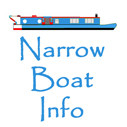Some narrowboaters may question the need for an inland waterways radio (VHF) given that they never venture out onto the open ocean. However, many locks and marinas connected to the ‘traditional’ canal system use VHF radio to communicate with all boaters. It may surprise you to know that the Inland Waterways Marina Frequency Guide runs to five pages of frequencies, with well-known and much visited destinations listed such as the Aire and Calder Navigation, The River Trent, and Dog in a Doublet and Bow Locks to name but a few. So it makes sense for boaters who frequent those regions to familiarise themselves with Inland Waterways VHF Radio use – and where necessary equip themselves with an appropriate radio. Most of us are used to yelling instructions to crew at locks (!) – or using a small two way radio to do the job properly, and most VHF transmitter receivers are as small and portable as those.
The article below is reproduced courtesy of www.seavoice-training.co.uk
The Growing Importance of Having a Marine VHF transceiver for Inland Waterways Radio Use
The inland waterways are becoming busier with increased commercial traffic and new pleasure craft. Many new boaters may not be fully familiar with the waterway or with traditional means of communication such as sound signals or flags. Both these factors have produced a situation where marine VHF radio on pleasure craft is becoming an essential piece of equipment leading to an improvement in safety. As a result, most commercial users and now consumers are being advised to use marine VHF radio as a primary safety tool to aid communication and navigation.
A marine VHF radio allows a boatowner to listen to broadcast messages, to call other ship or shore stations or groups of ship stations and to broadcast distress, urgency and safety messages. Gaining an operator’s certificate is straightforward and should present no problem to the average inland waterways leisure craft user.
Why do we need it?
• It is a matter of safety.
Marine VHF Radio provides a means to communicate with other vessels and shore stations (e.g. ports, locks, bridges and marinas) on operational, navigation and safety matters.
• It is commonly used.
Because radio is now common among commercial vessels on the larger freight waterways, there is a tendency to rely on it as a means of ascertaining the locations of other vessels. If they hear you on the radio, they will know where you are likely to be and can call you to warn of their approach, if necessary.
• It is commonly used (2).
Marine VHF Radio has become widely used on larger waterways, replacing flag signals and to some extent sound signals, without a VHF radio, you may be exposing yourself to unnecessary risks.
• It allows you to navigate the Inland Waterway Network.
It provides a means for you to call for locks to be prepared or moveable bridges to be swung or raised in advance of your arrival.
• It might be obligatory.
Marine VHF radio is obligatory on vessels navigating many tidal waterways, including parts of the Ouse, Humber, Trent, Witham and Thames.

• VHF radio sets are now relatively inexpensive.
The ship portable radio licence is free. Users will also need to attend a one day course, available in all parts of the country, to obtain the required operator’s certificate.
• Cruising in company.
You will be able to stay in touch with your companion vessel(s) for safety and planning purposes (but not idle chat, which is not allowed on the public channels).
• In an emergency.
As well as being able to call the nearest lock keeper, port control or coastguard (depending where you are), marine VHF also gives you the best chance of attracting help from a nearby vessel. Another vessel may be able to reach you before the emergency services do.
For these reasons, the Inland Waterways Association strongly recommends that all pleasure craft using larger waterways in active use by freight carrying vessels, or any tidal waterway, should carry a marine VHF radio and have someone on board who is qualified and able to use it correctly.
Icom UK Marketing: marketing@icomuk.co.uk

Couldn’t agree more with this article. Not just because I teach VHF radio but because everyone should know how to use it correctly. It is not CB for boaters but a serious piece of kit for responsible boating people.
Yes, marine radio on open water of any sort is part of being a competent boater – like that anchor you never really thought you’d need (with chain and a serious length of thick cable) – or the spare lifebuoy / lifejacket – or the rope ladder that can quickly be made fast to the boat rails, if there’s a tired (maybe drunk) person in the water.
Do it right.